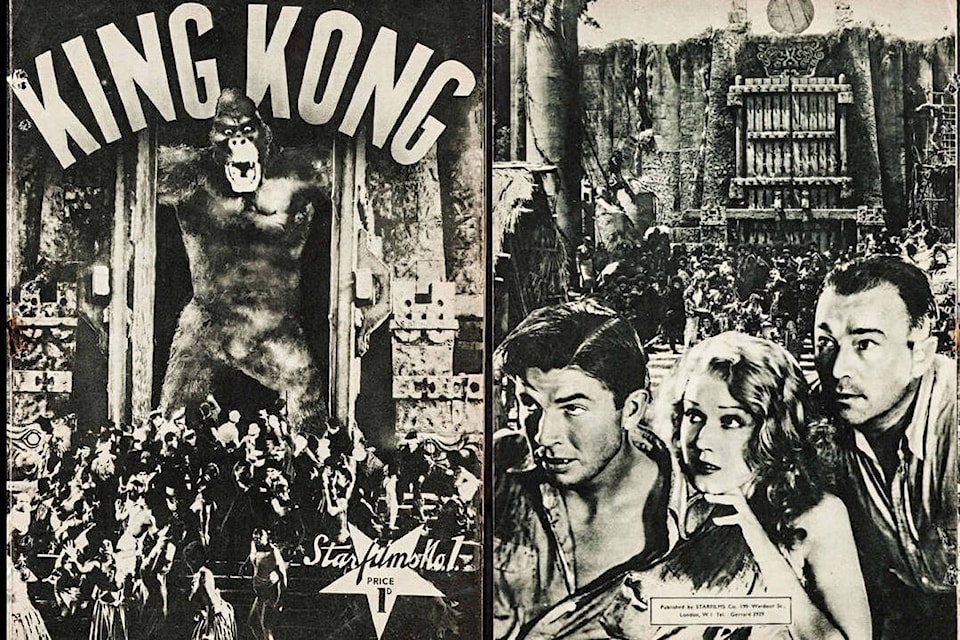The road to Hell, they say, is paved with good intentions. It was certainly my good intention, one night last week, to go to bed at what I consider a reasonable hour, but then I saw that the 1933 version of King Kong was airing on Turner Classic Movies starting at 11:30 p.m., and I knew I wouldn’t be hitting the hay until it was over 100 minutes later.
And lo, it came to pass. I have a huge fondness for the original version of King Kong, which was the first “grown-up” movie I ever saw (more about that in a minute), back when I was around eight years old, and which more than holds up today, 91 years (!) after it was made. Willis O’Brien’s special effects — particularly his rightly-celebrated stop motion animation work — are still a joy and wonder to behold: they might be somewhat unpolished compared with today’s glossy efforts, but they have a heart and soul that computer animation can’t match.
For a film that’s nearly a century old, made just a few years into the talkies era, it’s remarkably assured, nowhere more so than in Max Steiner’s score. Music in movies to that point had been mostly incidental, such as in a song-and-dance number, but Steiner composed themes and motifs for the different characters, and underscored the action in a way that was revolutionary. In one scene, the native chief descends some steps to get closer to the ship’s crew, who have landed on his island, and the music is perfectly timed to his movements, in a way that had some contemporary audiences looking for the live orchestra that they were sure must be watching the film along with them and timing their playing to the action.
I mentioned earlier that the 1933 King Kong is a “grown-up” film, by which I mean it was not aimed at children. However, there is nothing in it that is unsuitable for a child to watch, and the same can be said for many, if not most, of the films made up until the 1950s. This is due to the Motion Picture Production Code, which for three decades regulated what filmmakers could and could not do, say, or show in movies. Violence had to be bloodless; sex had to be implied; profanity was right out. In 1939 the makers of Gone With the Wind had to fight to retain Rhett Butler’s famous “Frankly, my dear, I don’t give a damn” line. Have you ever wondered why Ingrid Bergman’s character in Casablanca doesn’t just leave her husband to be with Humphrey Bogart? The Production Code forbade showing a woman leaving her husband for another man.
If movies featured “adult” themes it had to be subtext, or hinted at, or cleverly disguised so that only the most astute viewers would “get it”. Filmmakers could still say what they wanted to say, but the constraints of the Production Code meant they had to be very clever in saying it, so as not to offend the censors. The result was grown-up films that didn’t offend children either, meaning a whole world of sophisticated motion pictures that kids could watch with impunity. Try that today, where anything not specifically targeted at young children is probably not suitable for most kids to watch.
When my own son was eight, in 2005, another version of King Kong came out, and as he had already seen the original he was eager to see what the new film had to offer. Far more blood and violence and disturbing scenes, was the answer, which is why it was rated PG-13 (meaning it might not be suitable for those under 13). This didn’t bother him (I hadn’t thought it would, or I wouldn’t have taken him to see it; your eight-year-old’s mileage might vary), but something else did. As we left the theatre, he said thoughtfully “It was good, but the original version was better.” Sometimes less is more, and a little subtlety goes a long way. Modern filmmakers, take note.
